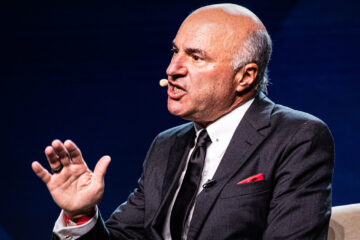If a seller writes an uncovered options contract, they assume the contract will not move into the money and be exercised by its buyer.
Colton Duke via Unsplash; Canva
A naked or uncovered option position is one in which the writer of an option contract lacks either the shares or funds necessary to fulfill the terms of the contract should it be exercised by its buyer. If a naked contract is exercised by its buyer because it moves into the money, its writer must come up with the necessary shares or funds to fulfill the contract.
What Is an Uncovered Call Option?
When an investor buys a call option, it gives them the right to purchase 100 shares of a particular stock from the option writer at a particular strike price on or before the contract’s expiration.
If the value of the stock exceeds the contract’s strike price (plus its premium) before its expiration, the buyer of the contract may exercise it in order to buy 100 shares below market value. If the writer of the contract didn’t actually possess the 100 shares necessary to fulfill the contract, they would have sold a naked or uncovered call.
What Happens When Someone Exercises a Naked Call Option?
Because call options are contracts, their writers are obligated to fulfill the terms of the contract should the buyer choose to exercise. If a buyer exercises a call option, the writer is contractually obliged to provide 100 shares of the underlying stock or security to the buyer at the strike price listed in the contract.
If they do not possess these shares, they must buy them for market value then sell them to the option buyer for less than market value. By doing this, they realize a capital loss.
What Is an Uncovered Put Option?
When someone writes a put option contract, the contract’s buyer has the right to sell the underlying stock to the writer for a pre-determined strike price on or before the contract’s expiration. If, by the time the option expires, the strike price is higher than the underlying stock’s spot (market) price, the contract owner may choose to exercise their put option so they can sell 100 shares of the stock for more than they are worth, resulting in a capital gain.
This would mean that the writer of the contract would be obligated to buy 100 shares of the stock at above market value, resulting in a capital loss. If the writer of this put option did not have a short position on the stock (or did not have enough money in their account to buy 100 shares of the stock at the contract’s strike price) when they initially wrote or sold the contract, they would have sold a “naked” or “uncovered” put.
What Happens When Someone Exercises a Naked Put Option?
Because put options are contracts, their sellers are obligated to fulfill the terms of the contract should the buyer choose to exercise. If a buyer exercises a put option, the seller is contractually obliged to purchase 100 shares of the underlying stock or security from the buyer at the strike price listed in the contract.
If the option writer does not have enough money in their account to do so, they must buy the shares on margin or sell other securities to raise the money necessary to purchase the shares from the option buyer at the strike price (above market value) outlined in the contract. By doing this, they realize a capital loss.
Why Do Investors Write Naked Option Contracts?
Investors write naked options when they hope to profit from options premiums without actually spending any money in advance. Naked option writers know that they may have to purchase shares or gather funds if the options they write are exercised, but they are sure enough that these options won’t move into the money that they do not cover the options they write in advance.
How Risky Are Naked Options?
Uncovered options are fairly risky in that while their potential upside is limited to their premium, their potential downside is usually much greater.
When it comes to a naked call option, the most a writer stands to make is the premium they charge for the contract. Their potential loss, however, is unlimited because the price of the underlying security could theoretically go up infinitely.
The higher the price of the security moves above the contract’s strike price before expiration, the more capital loss a naked call writer would experience were they forced to sell 100 shares to the contract buyer at the strike price.
When it comes to a naked put option, the most a writer stands to make is the premium their buyer pays for the contract. In the case of a put, however, a writer’s potential loss is capped because a security can’t fall below zero dollars in price.
Therefore, a naked put writer’s loss is capped at the contract’s strike price minus its premium times 100. For example, if a put contract’s strike price is $50 and its premium is $1, its writer could experience a capital loss to the tune of $4,900.


